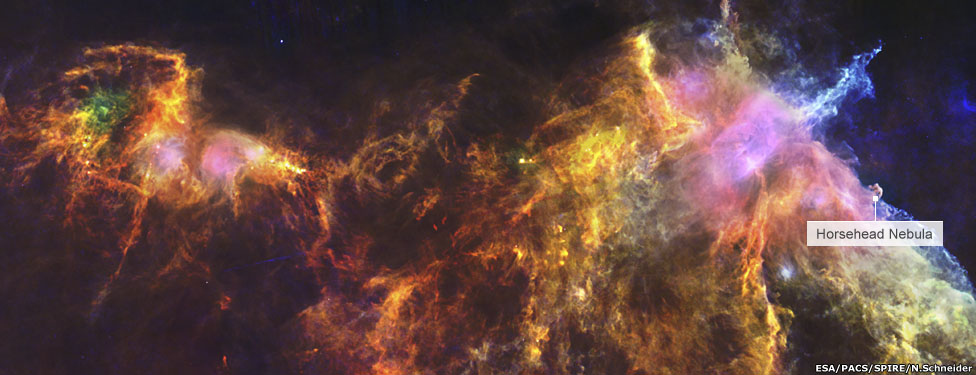 Carol Sat Apr 20, 2013 9:21 am
Carol Sat Apr 20, 2013 9:21 am
Europe's Herschel space telescope has imaged one of the most popular subjects in the sky - the Horsehead Nebula - and its environs. The distinctively shaped molecular gas cloud is sited some 1,300 light-years from Earth in the Constellation Orion. It is in a region of space undergoing active star formation - something Herschel has been most keen to study. The Hubble space observatory has also returned to the Horsehead scene, to celebrate 23 years in orbit. Together, these two great facilities give scientists a much broader insight into what is taking place in this familiar patch of the heavens. "In this new Herschel view, the Horsehead looks like a little feature - a pimple. In reality, of course, it is a very large entity in its own right, but in this great sweep of a picture from Herschel you can see that the nebula is set within an even larger, molecular-cloud complex where there is a huge amount of material and a great range of conditions," the Cardiff University, UK, researcher told BBC News. To provide a sense of scale, the Horsehead Nebula, also known in the catalogues as "Barnard 33", is about five light-years "tall". Hubble sees the Horsehead in near-infrared light. Herschel, on the other hand, goes to much longer wavelengths. This allows it to see the glow coming directly from cold gas and dust - the material that will eventually collapse under gravity to form the next generation of stars.



 Herschel Caught a Cosmic Horse
Herschel Caught a Cosmic Horse
